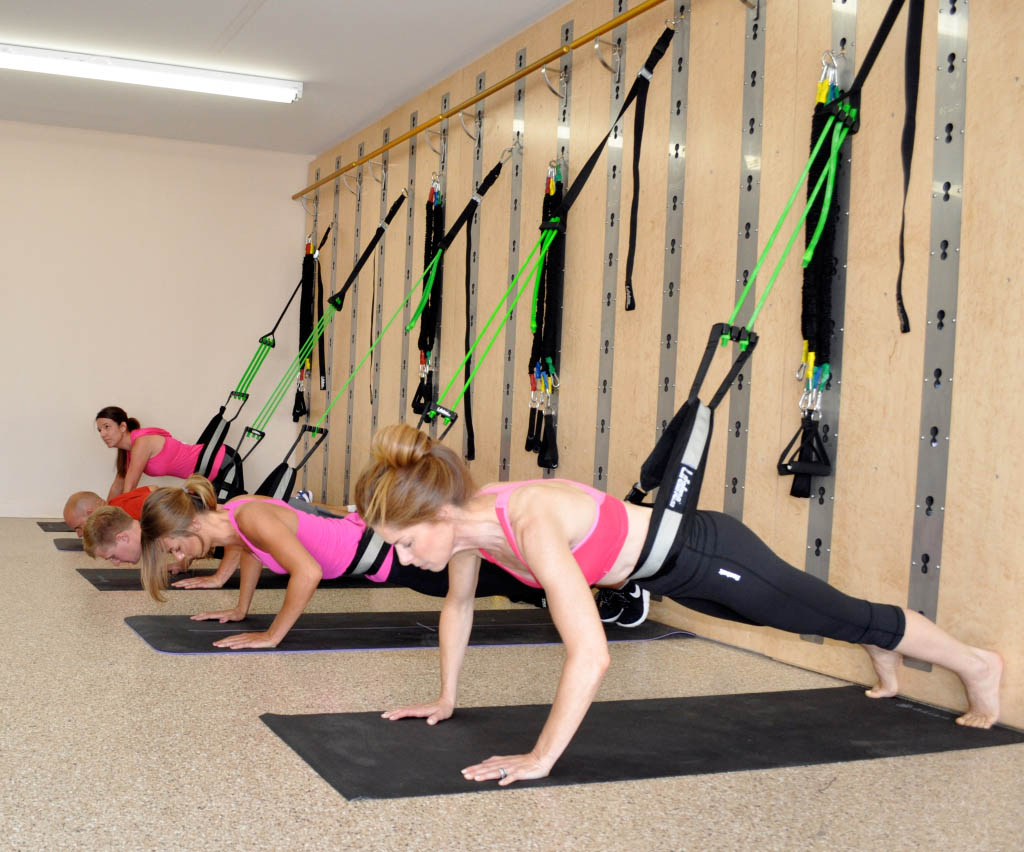What Muscles Do Pushups Work And What Are Some Common Mistakes?

Pushups are one of the most basic and simple of resistance training exercises. They can be done virtually anywhere with some equipment or no equipment. There are numerous modifications that can make the exercise practical for virtually anyone. And there are ways of making them more challenging and demanding. While most people are aware that pushups are a great exercise, you may be wondering what muscles specifically are at work when engaging in a pushup. When addressing the question of what muscles pushups work, let’s take a look at the major muscles involved here, as well as some lesser known muscles that play a role.
The Major Muscles Used In A Pushup
The major muscles used in a pushup are the Pectoralis Major Clavicular Head, the Pectoralis Major, the Triceps Brachii, and the Anterior Deltoids. Translated into everyday terms, the pushup targets muscles of the chest and upper chest, the front of the shoulders, and the back of the arms. This makes pushups an excellent means of toning, building up, and firming the upper front part of the body for your next trip to the beach, or simply admiring yourself in the mirror.
Lesser Known Muscles Used In A Pushup
A number of lesser known muscles are also used during a pushup. These lesser known muscles can provide some real insight into inherent weaknesses and muscular imbalances present in the person doing the pushup. One muscle used in the pushup is the Anconeus, a muscle near the rear part of the elbow. Another is the Serratus Anterior, which runs along the rib cage. Even the Gluteus Maximus is pulled in when doing the pushup. Various Intrinsic Core Stabilizer muscles are also used while doing a pushup to keep the torso in the straightened position. When it comes to these lesser known muscles used during a pushup, deficiencies in these particular muscles can result in improper technique and incorrect movement patterns. In fact having a person do a pushup is one way in which a professional can seek to identify certain muscular deficiencies.
Common Mistakes Made During The Pushups
First, when I refer to mistakes, it may be more appropriate to say muscle imbalances or improper movement patterns. However, for the average person this can be thought of as a mistake that may take some work and training to correct. It is simply saying that the person is doing the exercise improperly.
Mistake 1: Low Back Sagging
This is a very common mistake. It occurs when the person’s hips and lower back begin to sag toward the floor. The cause can be due to over-activity in the Erector Spinae and Hip Flexors, however it is also likely that the person’s Intrinsic Core Stabilizers and Gluteus Maximus are also weak. Taking some time to target the Intrinsic Core Stabilizers and Gluteus Maximus can help with this improper movement pattern.
Mistake 2: Scapular Winging
This mistake is just what the name sounds like. The person’s shoulder blades rise up toward the ceiling while the chest drops down. The shoulder blades extend vertical giving the appearance of “wings”. The main culprit here is usually weak Serratus Anterior Muscles, but the middle/lower Trapezius may also be at play as well. There are numerous exercises that specifically target both, and can therefore help correct this mistake.
Mistake 3: Low Back Rounding
The final mistake made that I’ll mention here (although there are more), is low back rounding. This is when a person drives their hips and butt up in the air toward the ceiling. Now assuming that the person in the gym is not doing this in an attempt for some bizarre attention, the muscles that are overactive here are the Rectus Abdominis and the External Obliques, with the Intrinsic Core Stabilizers being inherently weak or underactive.
The pushup is a great exercise which pulls in a number of muscles throughout the body. Incorrect technique while doing the pushup is often due to some muscles being weak/underdeveloped, and others being dominant or overactive. While it is beyond the scope of this article to go through the specific exercises to target and correct each technical mistake, this should hopefully help in the identification of specific muscles that need some work.
Paul Owens is a personal trainer in the Cleveland area. He is a Certified Personal Trainer through the National Strength and Conditioning Association, and the National Council on Strength and Fitness. He is also a Corrective Exercise Specialist through the National Academy of Sports Medicine. He can be reached at http://www.clevelandpersonaltraining.com.






